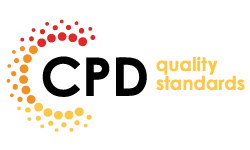This statistics and data analysis course will pave the statistical foundation for discussion on data science. You’ll learn how data scientists exercise statistical thinking in designing data collection, derive insights from visualizing data, obtain supporting evidence for data-based decisions and construct models for predicting future trends from data. If you are interested in this field you’ll be benefitted from this course.
Assessment
This course does not involve any written exams. Students need to answer 5 assignment questions to complete the course, the answers will be in the form of written work in pdf or word. Students can write the answers in their own time. Each answer needs to be 200 words (1 Page). Once the answers are submitted, the tutor will check and assess the work.
Certification
Edukite courses are free to study. To successfully complete a course you must submit all the assignment of the course as part of the assessment. Upon successful completion of a course, you can choose to make your achievement formal by obtaining your Certificate at a cost of £49.
Having an Official Edukite Certification is a great way to celebrate and share your success. You can:
- Add the certificate to your CV or resume and brighten up your career
- Show it to prove your success
Course Credit: Columbia University
Course Curriculum
| Module: 1 | |||
| 1.1 Lecture: What is Data Science? | 00:06:00 | ||
| 1.2 Lecture: What questions can Data Science answer? | 00:07:00 | ||
| 1.3 Lecture: Why is there an explosion of data? | 00:06:00 | ||
| 1.4 Lecture: What role does data visualization play in Data Science? | 00:06:00 | ||
| 1.5 Lecture: How did you become interested in Data Science? | 00:10:00 | ||
| 1.6 Lecture: What do you predict will happen in Data Science in 5 years? | 00:07:00 | ||
| 1.7 Lecture: What skills does a Data Scientist need to be successful? | 00:08:00 | ||
| 1.8 Lecture: What should a non-Data Scientist know about Data Science? | 00:07:00 | ||
| 1.9 Assignment | 00:40:00 | ||
| 1.10 Assignment | 00:05:00 | ||
| Module: 2 | |||
| 2.1 Lecture: Introduction | 00:02:00 | ||
| 2.1 Lecture: Statistical Thinking for Data Science | 00:15:00 | ||
| 2.2 Numerical Data 1 Simple Visualization (Part 1) | 00:08:00 | ||
| 2.2 Numerical Data 1 Simple Visualization (Part 2) | 00:07:00 | ||
| 2.2 Numerical Data 1 Simple Visualization (Part 3) | 00:06:00 | ||
| 2.3 Lecture: Numerical Data 2 Simple Visualization and Summaries (Part 1) | 00:10:00 | ||
| 2.3 Lecture: Numerical Data 2 Simple Visualization and Summaries (Part 2) | 00:08:00 | ||
| 2.4 Lecture: Numerical Data 3 Association Part 1 | 00:11:00 | ||
| 2.4 Lecture: Numerical Data 3 Association Part 2 | 00:08:00 | ||
| 2.4 Lecture: Numerical Data 3 Association Part 3 | 00:14:00 | ||
| 2.5 Lecture: Data Collection – Sampling | 00:16:00 | ||
| 2.6 Lecture: Introduction to Probability (Part 1) | 00:06:00 | ||
| 2.6 Lecture: Introduction to Probability (Part 2) | 00:09:00 | ||
| 2.6 Lecture: Introduction to Probability (Part 3) | 00:11:00 | ||
| 2.6 Lecture: Introduction to Probability (Part 4) | 00:06:00 | ||
| 2.7 Lecture: Statistical Inference – Confidence Intervals (Part 1) | 00:14:00 | ||
| 2.7 Lecture: Statistical Inference – Confidence Intervals (Part 2) | 00:06:00 | ||
| 2.8 Lecture: Statistical Inference – Significance tests (Part 1) | 00:15:00 | ||
| 2.8 Lecture: Statistical Inference – Significance Tests (Part 2) | 00:04:00 | ||
| 2.9 Lecture: Introduction of Health Care Database | 00:01:00 | ||
| 2.9 Lecture: Status of Current Observational Health Studies (Part 1) | 00:12:00 | ||
| 2.9 Lecture: Status of Current Observational Health Studies (Part 2) | 00:07:00 | ||
| 2.10 Lecture: Statistical Terms Explained | 00:14:00 | ||
| 2.11 Lecture: Unknown Characteristics of Observational Health Studies (Part 1) | 00:07:00 | ||
| 2.11 Lecture: Unknown Characteristics of Observational Health Studies (Part 2) | 00:09:00 | ||
| 2.12 Lecture: Lessons Learnt from OMOP Experiments | 00:16:00 | ||
| 2.13 Lecture: P-value Calibration | 00:10:00 | ||
| 2.14 Lecture: Concluding Remarks | 00:08:00 | ||
| Module: 3 | |||
| 3.1 Lecture: Conditional Probability | 00:14:00 | ||
| 3.2 Lecture: Bayes’ formula (Part 1) | 00:06:00 | ||
| 3.2 Lecture: Bayes’ formula (Part 2) | 00:10:00 | ||
| 3.3 Lecture: Studying Association: Two-way Table | 00:14:00 | ||
| 3.4 Lecture: Studying Association: Chi-square Test of Independence | 00:15:00 | ||
| 3.5 Lecture: Association: One-way Analysis of Variance (Part 1) | 00:12:00 | ||
| 3.5 Lecture: Association: One-way Analysis of Variance (Part 2) | 00:07:00 | ||
| 3.6 Lecture: Regression Analysis 1 | 00:10:00 | ||
| 3.6 Lecture: Regression Analysis 2 | 00:13:00 | ||
| 3.7 Lecture: Regression Analysis 3 | 00:10:00 | ||
| 3.7 Lecture: Regression Analysis 4 | 00:13:00 | ||
| 3.8 Regression Analysis 4 and Concluding Remarks | 00:11:00 | ||
| 3.9 Lecture: Types of Data Analytics | 00:11:00 | ||
| 3.10 Lecture: Clustering Text (Part 1) | 00:13:00 | ||
| 3.10 Lecture: Clustering Text (Part 2) | 00:15:00 | ||
| 3.11 Lecture: Topic Modeling (Part 2) | 00:13:00 | ||
| 3.11 Lecture: Topic Modeling (Part 3) | 00:07:00 | ||
| 3.12 Lecture: Metrics for Label Description (Part 1) | 00:12:00 | ||
| 3.12 Lecture: Metrics for Label Description (Part 2) | 00:14:00 | ||
| 3.13 Lecture: Concluding Remarks | 00:02:00 | ||
| Module: 4 | |||
| Different goals, different looks | 00:30:00 | ||
| 4.1 Readings pdf 2 | 00:05:00 | ||
| 4.1 Readings pdf 3 | 00:05:00 | ||
| 4.1 Readings pdf 4 | 00:05:00 | ||
| 4.1 Lecture: Graphs Are Comparisons (Part 1) | 00:07:00 | ||
| 4.1 Lecture: Graphs Are Comparisons (Part 2) | 00:10:00 | ||
| 4.1 Lecture: Graphs Are Comparisons (Part 3) | 00:04:00 | ||
| 4.2 Lecture: Use Data To Answer Questions (Part 1) | 00:09:00 | ||
| 4.2 Lecture: Use Data To Answer Questions (Part 2) | 00:08:00 | ||
| 4.3 Lecture: A Case Example (Part 1) | 00:09:00 | ||
| 4.3 Lecture: A Case Example (Part 2) | 00:08:00 | ||
| 4.4 Lecture: Decision Making Process of Data Visualization 1 | 00:13:00 | ||
| 4.5 Lecture: Decision Making Process of Data Visualization 2 | 00:08:00 | ||
| 4.6 Lecture: Decision Making Process Main Worked Example | 00:13:00 | ||
| 4.7 Why Visualize Data Worked Example 1 | 00:15:00 | ||
| 4.8 Lecture: Why Visualize Data Worked Example 2 (Part 1) | 00:08:00 | ||
| 4.8 Lecture: Why Visualize Data Worked Example 2 (Part 2) | 00:09:00 | ||
| 4.9 Lecture: Dashboards | 00:15:00 | ||
| 4.10 Lecture: Dashboards Worked Example 1 (Part 1) | 00:13:00 | ||
| 4.10 Lecture: Dashboards worked Example 1 (Part 2) | 00:11:00 | ||
| 4.11 Dashboards Worked Example 2 | 00:10:00 | ||
| Module: 5 | |||
| 5.1 Introduction to Bayesian Modeling | 00:03:00 | ||
| 5.2 Lecture: Probability Calibration | 00:14:00 | ||
| 5.3 Lecture: Probability As Measurement of Uncertainty | 00:12:00 | ||
| 5.4 Lecturer: Bayesian Inference | 00:10:00 | ||
| 5.5 Lecture: How To Use Prior Information | 00:12:00 | ||
| 5.6 Lecture: Bayesian Modeling in Practice (Part 1) | 00:15:00 | ||
| 5.6 Lecture: Bayesian Modeling in Practice (Part 2) | 00:11:00 | ||
| 5.7 Lecture: Business Applications in Bayesian Statistics Introduction | 00:04:00 | ||
| 5.8 Lecture: Data Collection and Model Building 1 | 00:09:00 | ||
| 5.9 Lecture: Data Collection and Model Building 2 | 00:11:00 | ||
| 5.10 Lecture: Model Building Review | 00:09:00 | ||
| 5.11 Lecture: Model Insights 1 | 00:09:00 | ||
| 5.12 Lecture: Model Insights 2 | 00:17:00 | ||
| 5.13 Lecture: Example Modeling Museum Membership Renewal (Part 1) | 00:15:00 | ||
| 5.13 Lecture: Example Modeling Museum Membership Renewal (Part 2) | 00:05:00 | ||
| 5.14 Lecture: Example Modeling User Behavior on a Deals Website (Part 1) | 00:17:00 | ||
| 5.14 Lecture: Example Modeling User Behavior on a Deals Website (Part 2) | 00:07:00 | ||
| Week 5 Recommended Readings | 00:20:00 | ||
| Assessment | |||
| Submit Your Assignment | 00:00:00 | ||
| Certification | 00:00:00 | ||
Course Reviews
No Reviews found for this course.






